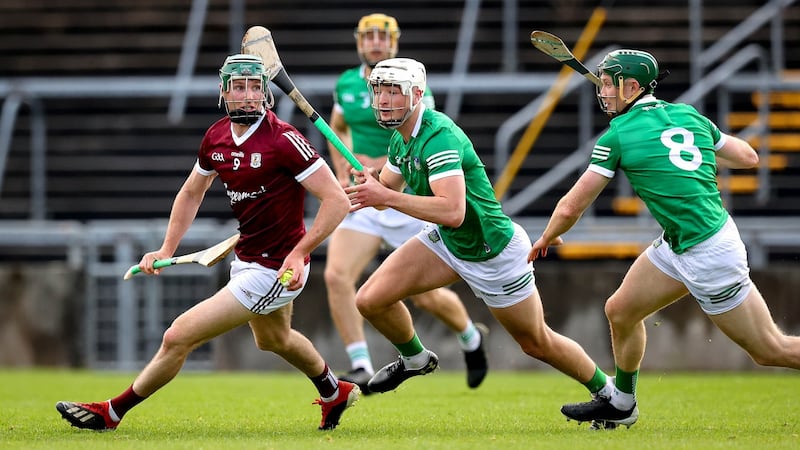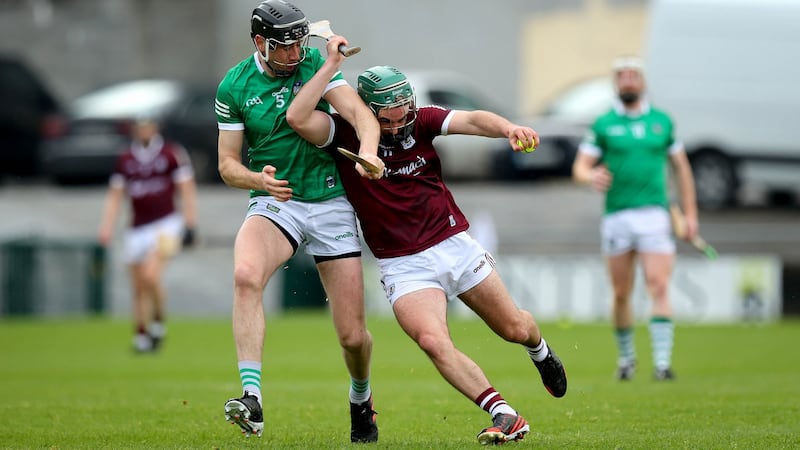Something interesting is happening during this league – and don't worry, this is nothing to do with new rules or referees or anything like that. For an idea of what I'm talking about, we'll start by going back to the 2018 All Star team. At full forward was John Conlon. At centre forward was Joe Canning. And while we're at it, we can go back to the 2016 team where we find Austin Gleeson at centre forward.
Now go back to last weekend and go through the line-ups for Clare, Galway and Waterford. Conlon and Gleeson are turning out at centre back. Joe is out playing in midfield. We don’t know if that’s the way it’s going to be come the summer but they must be trying it out for a reason. Championship starts in five weeks so they’re not doing this for the fun of it.
Legendary American football coach Paul ‘Bear’ Byrant is the man who came up with the phrase: “Offense sells tickets. Defense wins championships”. The equally legendary Fan Larkin from my own club was always of the complete opposite view. Fan won five All-Irelands and four All Stars as a corner back but he was never in any doubt about the key factor in hurling. “Forwards win matches,” he always said. That was the long and short of it as far as Fan was concerned.
As a young lad, I listened to the gospel according to Fan and it would never have occurred to me to question it. Maybe I was brainwashed by his words echoing in my ears. But as I get older, I have come around more and more to Bear Bryant’s way of thinking. And maybe hurling coaches are doing the same – or maybe it’s a combination of the two. Maybe it’s true that forwards win matches but more and more teams want them playing further away from the goal.
This trend has been simmering away nicely beneath the surface of the hurling world for a while. Think of all the players who have dropped further and further back the field in the serious All-Ireland contenders after starting out their careers up in the forwards.

Cathal Mannion has probably been the best player in the league so far, distributing the ball from deep positions as a roving midfielder. But go back to 2015 and he was a corner forward in his first All-Ireland final and was named as a wing forward on the All Star team. Kyle Hayes was man of the match in the 2018 All-Ireland final at centre forward and ended the year as the Young Hurler of the Year. Now you can't imagine a Limerick team without him in the half-back line.
Plenty more too. Declan Hannon started in the forwards. So did Noel McGrath and Pádraig Walsh and Aidan Harte and Cian Lynch and Kevin Moran and lots more. It isn't a totally new thing – there's always been a bit of it around. Think of Ken McGrath, Tommy Walsh, Ollie Canning and the likes. But I can't remember it ever being this common with players who you would have considered to be absolutely key forwards.
And in doing so, it hasn’t just been a matter of going back there and getting involved if the ball happens to land on their patch. They’re pivotal players now. They dictate critical elements of how their teams play.
My initial reaction when it started happening was that it didn’t make a whole lot of sense. These are clutch players, go-to guys. My thinking would always have been that these are the guys any team would want to make space for. That’s what you do with lads who win All Stars in the forwards – you try to shape your tactics towards getting them out in the open so that they can do a world of damage on the scoreboard.
Bulging bicep
Especially with the way the game is these days, where the middle third has become so completely congested. Every game now comes down to who manages to control the flow of traffic between the 65s. It’s like the Red Cow at rush hour in there. You don’t have room to turn a sweet in your mouth. You can’t look sideways without getting the belt of a bulging bicep. There are limbs and sticks flying everywhere. There are extra hits after the ball has gone.
So when I look at someone like Joe Canning or John Conlon, my first thought is why would you subject them to that kind of hassle? Joe is 32. John will be 32 next month. They’re both in phenomenal shape but even so – you’d have thought they could leave all the grunt work in the trenches there to the younger lads.
But the more I’ve watched these games, the more I’ve come around to seeing why they’re being deployed in those positions. My initial instinct was actually the opposite of what was happening. Yes, there’s far more traffic out around the middle third but Conlon, Gleeson, Canning and the rest of them are out around there now because of that, not despite it.
The tight confines of the middle third require the best decision-makers and executors of the skills of the game. It calls for the guys who can work the best when time is tightest and the pressure is at its highest. The managers and coaches have obviously decided that possession matters above and beyond everything else – so in order to win the possession battle, you put your most-skilled players in that zone.
It makes sense, the more you think about it. When everybody is doing loads and loads of strength and conditioning work, you eventually run out of space for one team to have an advantage over the rest. Especially now, after the enforced breaks of the past year have given everyone time to get into as good a shape as possible.
So if you’re not going to win the war in the middle on sheer physicality, maybe it only stands to reason that you try to win it on technique. When space and time is at its premium, you put your most skilled players in there. Joe Canning, Cian Lynch, Austin Gleeson, Noel McGrath – each of them have been Hurler of the Year or Young Hurler of the year (or both). They can flick the ball into their hand in the blink of an eye, they can whip the ball away from the rucks and start attacks without a second thought.
I see the role of the centre back evolving over the next couple of years. Gone will be the days of the six as a hitch-hiker standing in the one static position for long periods of time to fill a gap. Instead, teams will look to have a fluid, silky roving player who glides around receiving breaking ball and passes and creating attacks.
Of course, aerial prowess and physicality is important but not essential when you’re conducting interviews for the position. Positioning and distribution must feature high on your CV. Your LinkedIn profile will have to major on peripheral vision and spatial awareness if you’re going to be a good fit for the role.
The centre back was once the linchpin of the defence. I think that's going to become a secondary consideration – your six is now going to be thought of as one of your critical attackers. The likes of Tadhg De Búrca, Pádraig Walsh, Kevin Foley will all feature regularly on the scoreboard.
But what is hugely significant is the effect an attack-minded centre back can have on others. It breeds a culture of attacking from the back. Defence might not be the new form of attack but defenders definitely have to have attacking as a key part of their make-up. The scoring zone has increased so much over the past decade that you defenders are finding themselves in position to take a shot at the posts far more frequently. You have to be up to the task.

Last weekend, Daire Grey and Calum Lyons both notched three points each from wing back. Of Tipperary's 0-22 v Cork, there were 10 Jason Forde frees but almost half of the other 12 from play came from defenders. Between them, Ronan Maher, Barry Heffernan and Cathal Barrett scored five points. That is the norm in most games now. So if lads are going to be coming out of defence and shooting multiple times in a game, that's another reason to have some of your best forwards playing in and around that area.
I will be fascinated to see if some of these repositioning experiments last through the summer. Conlon at centre back for Clare is particularly interesting. He could be there for a number of reasons. They might want to build the team around him from a pivotal position. Maybe it’s just to give him some game time facing the ball, where he isn’t being double-teamed and getting the usual special treatment a full forward would. Put it this way – there’s nobody pulling his jersey and standing on his toe when he’s playing centre back.
And maybe it's all a double-bluff, a coy move by Brian Lohan to see can he rebuild and shape an attack on the potential of Aron Shanagher being the go-to guy. Imagine a functioning forward unit with Shanagher as their main threat, with Shane O'Donnell working off him. Use that through the league and then reintroduce Conlon to the attack in the first round of the Munster Championship as a way of trying to catch Waterford off-guard.
However, it turns out, I think it is clear that there is a shift within the top level of the game towards a more flexible way of setting up. Forwards coming out the field to tilt the possession battle their way. Defenders finding themselves in scoring positions and being expected to convert rather than everybody crossing their fingers and blessing themselves as they take a pot shot.
Diarmaid Byrnes scored 12 points in five championship games last year – that's the gold standard. Plenty of forwards didn't manage that average. I suspect he will have more competition this year as we see more and more defenders hitting double-digit points over a season.
I, for one, am all on for it. Finally defenders are getting credit – and in some cases doing the forwards’ jobs for them.
Bear Byrant would be proud!









